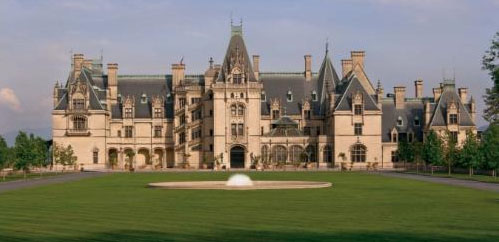Tiffany at Biltmore for History, Art and Gardens
Lovers of art, history and gardens will encounter a feast for the senses during the Tiffany at Biltmore exhibition, now open at Biltmore, George Vanderbilt’s 8,000-acre mountain estate, informs The Biltmore Company.
The exhibition of stained-glass lamps created by Louis Comfort Tiffany (1848-1933) and The Tiffany Studios fills the Biltmore Legacy exhibition hall in the estate’s Antler Hill Village.
Known as “Tiffany Lamps: Articles of Utility, Objects of Art,” the exhibition comes to Biltmore from The Neustadt Collection of Tiffany Glass in New York City. It is an in-depth look at the Tiffany Studios’ efforts to produce lamps that balance artistry with utility and profitability.
One of America’s most celebrated artists and designers, Tiffany was an established tastemaker in the late 19th century. He catered to the wealthiest patrons, including both friends and family of George and Edith Vanderbilt.
In addition to viewing the renowned lamps, guests can take in Tiffany-inspired landscapes and designs created for the exhibition. Tiffany’s use of botanicals and love of nature inspired Biltmore’s horticulture team to interpret his iconic dragonfly lamps in the estate’s gardens.
Four dragonflies were created from flowers and foliage planted to resemble stained glass. Each design spans 40 feet and took more than 12,000 plants to create, according to the company.
Guests entering Biltmore House walk underneath a large arbor festooned with glass grapes and botanical touches. The center fountain in the home’s Winter Garden has been transformed into a “growing” lamp with tropical plants and shallow water gardens for an exotic atmosphere.
Tiffany at Biltmore runs July 1-Oct. 23.
Located in Asheville, NC, Biltmore was George W. Vanderbilt’s vision. Designed by Richard Morris Hunt and completed in 1895, the 250-room French Renaissance chateau exhibits the Vanderbilt family’s original collection of furnishings, art and antiques.






